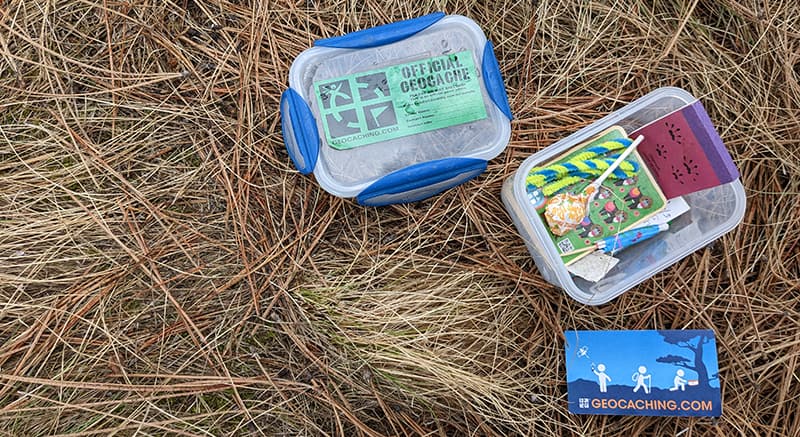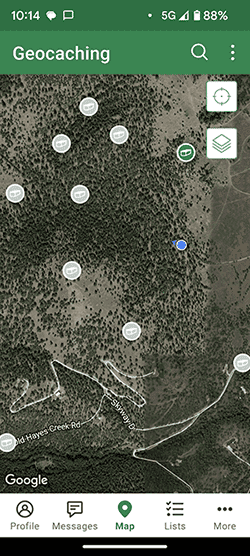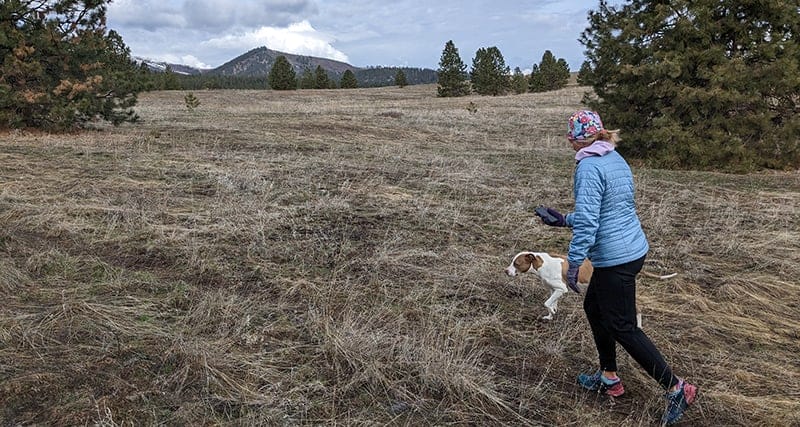
Spice Up the Family Road Trip: Geocache Across the Country
By PJ DelHomme
Geocaching is a modern-day treasure hunt, guaranteed to spice up any road trip. Park the rig, stretch your legs, and go hunting.
On May 2, 2000, the United States government essentially declassified GPS technology and allowed civilians to use it. A day later, a computer consultant near Portland, Oregon, tested the new technology by stashing a black bucket filled with prizes in the woods. He uploaded the coordinates to the internet so fellow techies could find it. And with that, geocaching was born.

What is Geocaching?
 As you might have guessed, geocaching uses GPS coordinates to locate hidden containers called caches. These caches can be found anywhere, from subway stations to playgrounds. After downloading a geocaching app, I found several stashes in the woods where I like to hunt close to my home in Montana. Geocaching.com claims there are 587 geocaches around Missoula, where I live. While daunting, it’s also kind of cool. Caches can contain journals, small toys, keychains—you get the idea. You can write a note in the journal and trade trinkets when you find a cache. Here’s a tip: show your union pride and throw in a local pin.
As you might have guessed, geocaching uses GPS coordinates to locate hidden containers called caches. These caches can be found anywhere, from subway stations to playgrounds. After downloading a geocaching app, I found several stashes in the woods where I like to hunt close to my home in Montana. Geocaching.com claims there are 587 geocaches around Missoula, where I live. While daunting, it’s also kind of cool. Caches can contain journals, small toys, keychains—you get the idea. You can write a note in the journal and trade trinkets when you find a cache. Here’s a tip: show your union pride and throw in a local pin.
What Gear Do You Need for Geocaching?
Before smartphones, geocachers needed access to websites and forums with GPS coordinates, which they manually typed into their GPS device. Today, you can still use a GPS (many come preloaded with caching coordinates), or you can download an app like Geocaching to your phone, turn on location services, and start searching. Honestly, you only need your phone, a pair of good shoes or boots, and a sense of adventure.
Map Your Geocache Route
If you have a destination for your road trip, you should use the app to plot caches along your route. While many traditional caches contain journals and trinkets, some “multi-caches” provide clues to more cache locations, while mystery caches require you to solve puzzles. Go with the traditional version if you’re just starting.
Get the Kids Into It
If there ever was a road-trip activity for kids, geocaching is it. It combines exercise, technology, worthless trinkets, and a bathroom break. And yes, there are geocaches at rest stops. Before the trip, tell the kids to clean out their junk drawer, putting every knick-knack, trinket, and piece of “priceless” junk in a Tupperware or show box. When you find a geocache, they will switch a trinket for a trinket. Then, get the kids to help plan your route, complete with cache-finding breaks. Caches typically have a difficulty rating based on location. Help them choose caches that are appropriate for their age and abilities. Caches with a difficulty rating of two or below are a place to start. These caches are located in easy-to-reach places and won’t require special equipment or climbing. Let the kids lead. After all, you’re the one doing all the driving.
Geocaching Tips
Your geocaching travels will take you into uncharted territory—that’s the point. Be aware that some caches might have safety hazards like rotten tree stumps, rodents, snakes, etc. Always write a note in the journal, add a trinket, and take one. Place the cache right back where you found it.
Geocaching is a great way to break up the day on a road trip. When your goal is to find the cache, you will be surprised at how your friends and family work together to accomplish the task. Even if you’re not on a road trip, geocaching is a great excuse to get outside and find an adventure.

Geocaching with cell phone while walking the dog.
Bonus Activity: Make a Union Strong Geocache
Consider putting together your own cache once you’ve found a few geocaches. Geocaching.com has all the guideline information you’ll ever need, so we won’t smother you with details here. When you do make your cache, throw in union stickers, pins, and any other union goodies you might have. You just might end up with a five-year-old promoting your local union on his or her lunch box thanks to finding your geocache.
PJ DelHomme writes and edits content from his home in western Montana. He runs Crazy Canyon Media and Crazy Canyon Journal.
Check out other articles in our Summer Road Trip Survival Guide blog series.



